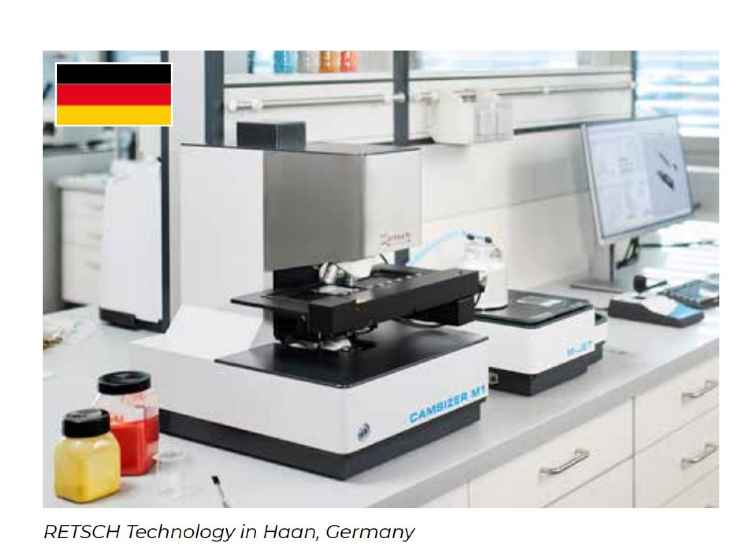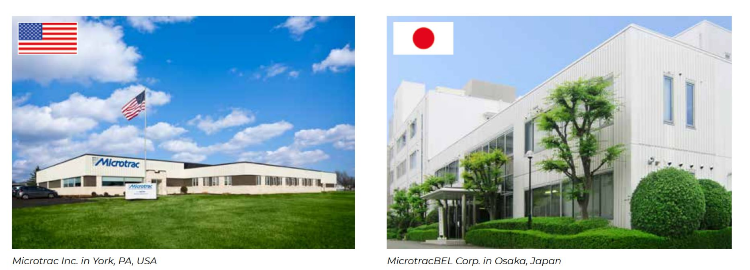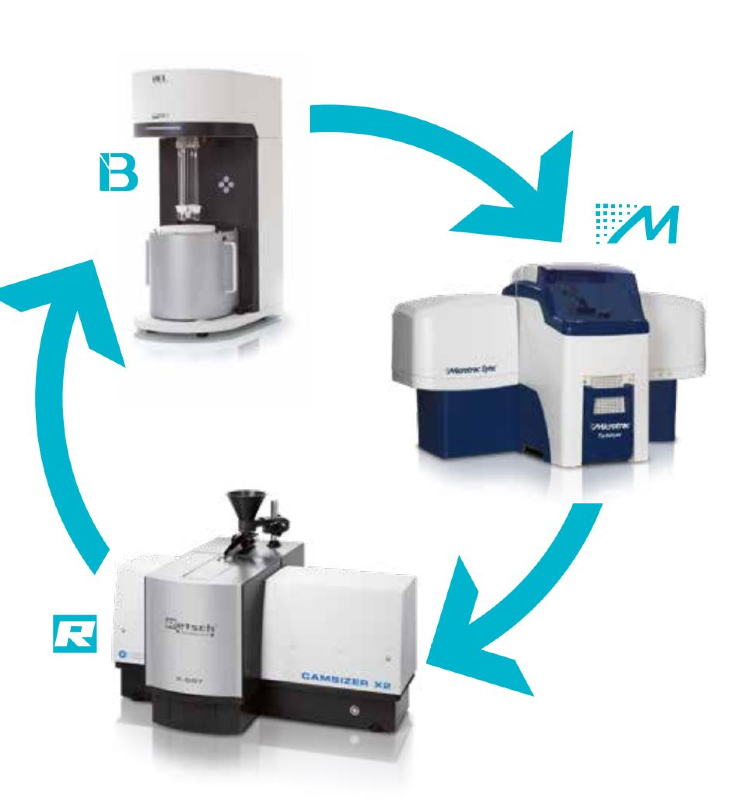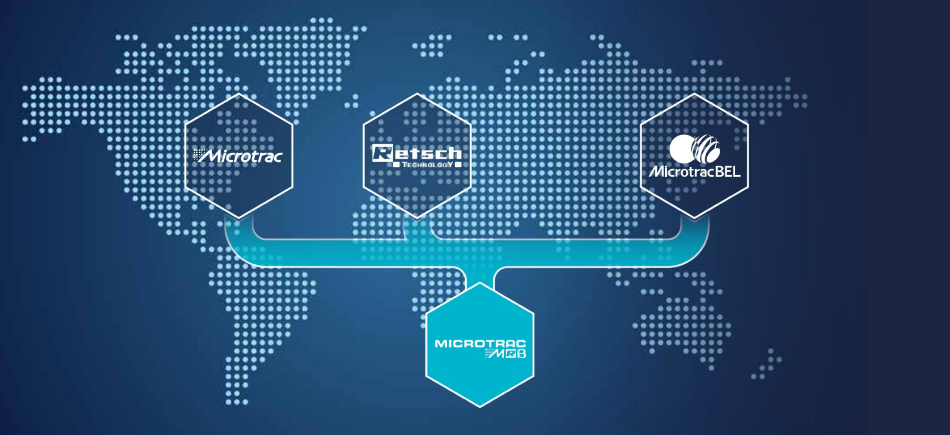 Interview conducted by Courtney Garner, MAJun 19 2020
Interview conducted by Courtney Garner, MAJun 19 2020
AZoM spoke to Paul Cloake, President of Microtrac MRB at Pittcon 2020 about how Microtrac MRB is leading in the field of particle characterization and how the company has developed.
Could you give our readers an overview of Microtrac MRB and your background?
Microtrac MRB has evolved as a consequence of the acquisition by Verder Scientific of Microtrac and MicrotracBEL. Previously, Verder Scientific had a division called Retsch Technology. Retsch Technology were leaders in image analysis and had developed the Camsizer product line, which is arguably the most advanced optical particle measurement system on the market at the moment.

Image Credit: Microtrac MRB
Verder Scientific is always looking to expand their reach in terms of performance and applications. When they acquired Microtrac, they also acquired our sister company MicrotracBEL, based in Japan. MicrotracBEL have a suite of absorption technology products. We merged the key core technologies, image analysis, laser diffraction/Dynamic Light Scattering and absorption technologies, into a single particle characterization operation. We've decided to take the ‘M’ from Microtrac, the ‘R’ from Retsch, and the ‘B’ from BEL and call it Microtrac MRB.

Image Credit: Microtrac MRB
How is Microtrac MRB leading in the field of particle characterization?
In terms of image analysis, the Camsizer has been pivotal. Image analysis is a relatively new technology. It's probably been around for only 20 years. It's been popularized by a number of companies, but mainly by Retsch with the Camsizer.
With Microtrac's laser diffraction line, Microtrac has always taken the leading approach on technology. If you look at laser diffraction at the moment, there are many companies that produce laser diffractors and perform laser diffraction very well, which makes it a bit of a commodity. Microtrac has differentiated its products from others on the market by developing the Sync, which is a combination of laser diffraction and imaging analysis.
Other companies tend to make an image analysis measurement, and then a laser diffraction measurement. What we do at Microtrac is use a combination measurement, which means that we take an image analysis and a laser diffraction measurement at the same time in the same sample cell. This allows us to blend the information we get from the imaging, and from the laser diffraction, to get a very comprehensive idea of what the size distribution is. Our image analysis allows us to produce information about the particle shape and particle morphology. This allows customers to validate their laser diffraction measurement by actually looking at the images and if, for example, the particle dispersion does not look the way it should, they have the ability to see that. We also have online image analysis which enables the quicker and safer analysis of the distribution of materials.

Image Credit: Microtrac MRB
What are the different types of particle characterization technologies that Microtrac MRB offers?
There are many different ways to determine particle size, which have been performed historically. You can do anything from using a ruler, or (typically) sieving, for big particles. We then moved on to more automated methods, and probably the most common method of measuring particle size is with laser diffraction. It is not commonly known, but Microtrac is one of the first companies to deliver a laser diffraction analyzer back in 1973.
The beauty of laser diffraction is that you can measure both very small material and very large material in a single measurement. There are different methodologies for doing so. For instance, if you want to measure very, very small material, you would use a technology called dynamic light scattering that limits you to a very small material. You could similarly say that sieves limit you to larger material, whereas laser diffraction allows you to measure a wider size range. As a result, it’s become very popular among many industries.
Most people want particle sizing simply to check that their product meets the necessary criteria to sell ship it. Laser diffraction offers a very simple, repeatable way of determining that, which is why it has become so popular.
On the other hand, there are many more opportunities for customers who want even more information about their material. With image analysis, you are able to see the particle to determine its shape and morphology, which has important applications.
One example of the applications of particle image analysis is glass beads. Glass beads are used in the reflective road markings and painted road markings. Each one of them acts like a lens, so we want to make sure they're as spherical as possible and not oval, because that affects how well they reflect. Using image analysis instead of laser diffraction allows you to look at the particle and to talk about the structure of that specific particle, which is why it is ideal for this application.
What are the other applications of Microtrac's solutions?
The wonderful thing about our business is that people ask me, "What are your applications?" and the answer is anything. For most people who manufacture material, almost universally, particle size tends to be one of the parameters that they measure to determine the quality of their material.
I'll give you some examples. If you were a chocolate manufacturer, the size of the chocolate particles determines the texture of the chocolate on the palate. In the pharmaceutical industry, in products from nasal sprays, to tablets, pills and capsules, the particle size determines the drug's absorption rate by the body.
One of the things I like to say about Microtrac MRB is that we are a particle characterization company and we measure from boulders, down to molecules, and everything in between, through our a range of products from image analysis to diffraction.
Why have Retsch Technology GmbH, Microtrac Europe GmbH and Bel Europe GmbH merged to form Microtrac MRB?
The acquisition benefits all of the stakeholders, as Microtrac MRB has expanded its market and capabilities. From the point of view of Verder Scientific, Verder Scientific has expanded their market reach both in terms of technology and geography. With the acquisition of Microtrac and MicrotracBEL, we now have multiple footprints in the US and a manufacturing footprint in Japan.

Image Credit: Microtrac MRB
Microtrac MRB now has a much larger marketing department, which allows us to engage in more sophisticated marketing strategies. It also allows us to pool technical resources among the companies of Microtrac, MicrotracBEL, and Retsch Technology. For example, Retsch Technology helps us improve our image analysis, and we help them improve their sample handling, so it has been a great benefit to us all.
From the customer's point of view, it gives a really strong, comprehensive offering to the customer. We can offer our customers significantly more technology, applications and expertise. In many ways, we can be a one-stop shop for particle characterization.
Which products were you showcasing at Pittcon 2020?
We showcased the new M1 particle analyzer from our Camsizer range, and the Sync, which is designed to expand the possibilities of the laser diffraction by adding image analysis. I think that we're now in a situation where we've got the best image analyzer and the best particle laser diffraction analyzer on the market from a technological point of view, and now we have the infrastructure behind us to be able to really push those.
What’s next for Microtrac MRB?
What's next for Microtrac is integrating the three companies into Microtrac MRB. We are also developing our own software, rapid user interface, for the entire product line in order to make analysis easier for our customers.
We're also looking to continue developing the Sync and Camsizer in terms of sampling, sample dispersion and sample introduction techniques, and also improve how well we introduce the material to the instrument.
We would love to expand the portfolio of Verder Scientific within Microtrac MRB, and are looking to continue the development of our core products and systems.
About Paul Cloake

Paul Cloake is currently President of Microtrac Inc. Born in Ireland, and educated at University College Dublin, Paul has been involved in the Particle Characterization field for almost 40 years.

This information has been sourced, reviewed and adapted from materials provided by Microtrac.
For more information on this source, please visit Microtrac.
Disclaimer: The views expressed here are those of the interviewee and do not necessarily represent the views of AZoM.com Limited (T/A) AZoNetwork, the owner and operator of this website. This disclaimer forms part of the Terms and Conditions of use of this website.